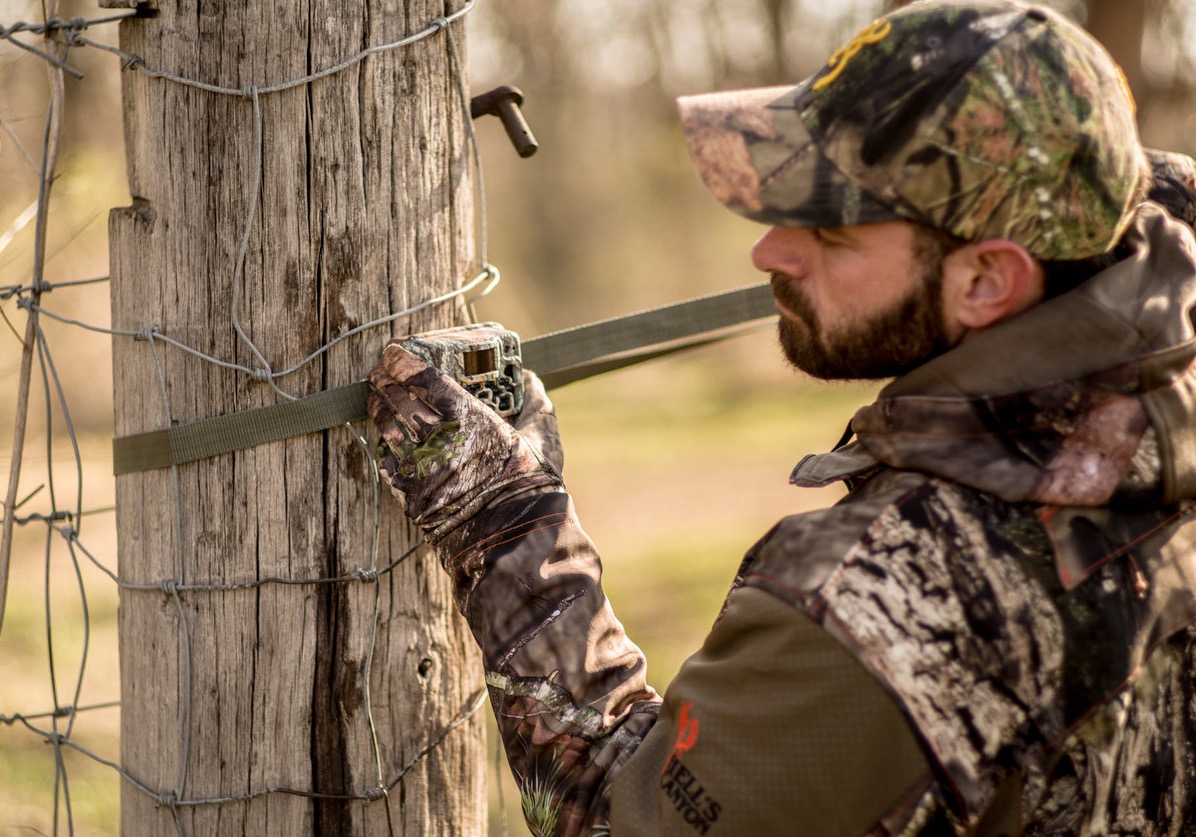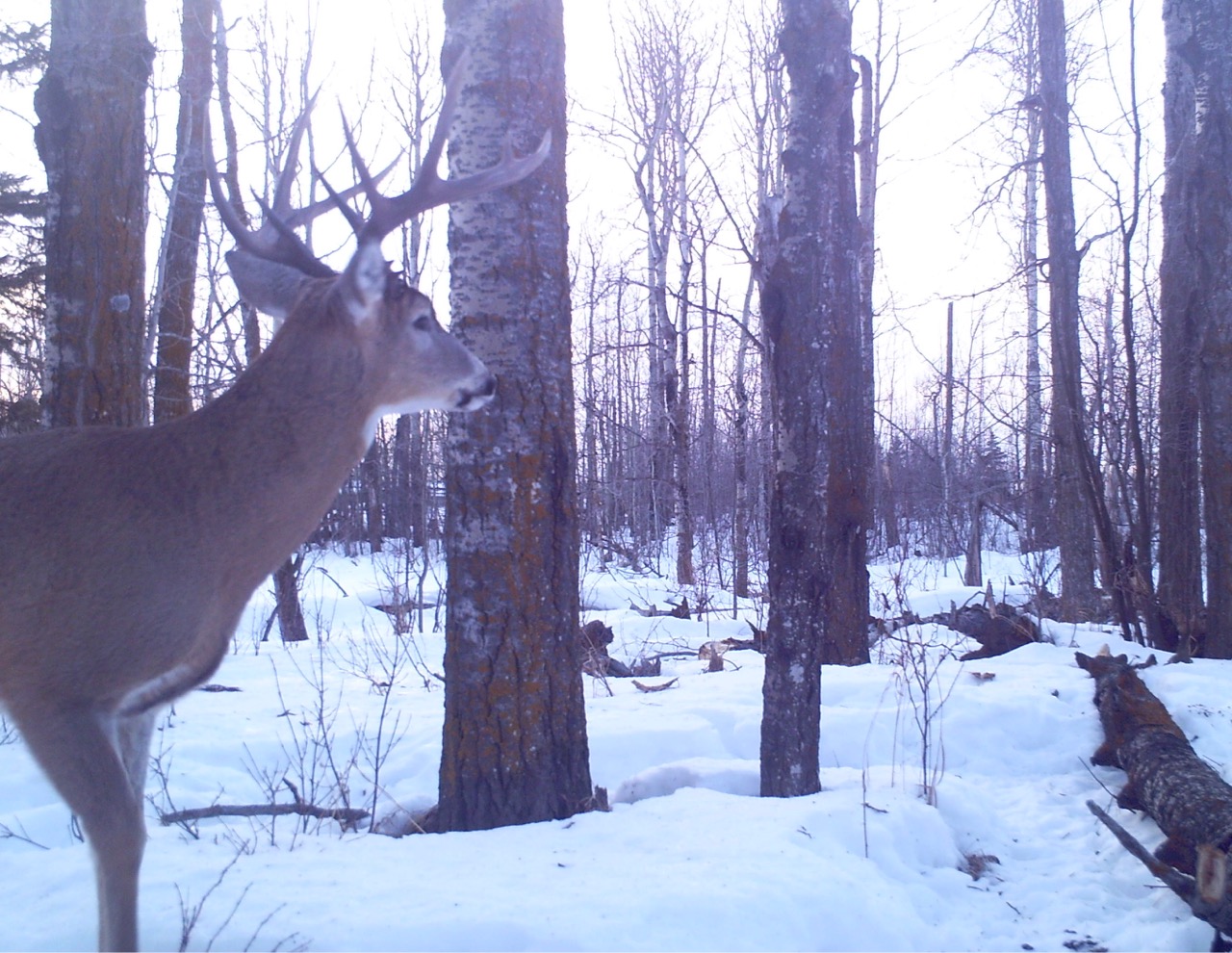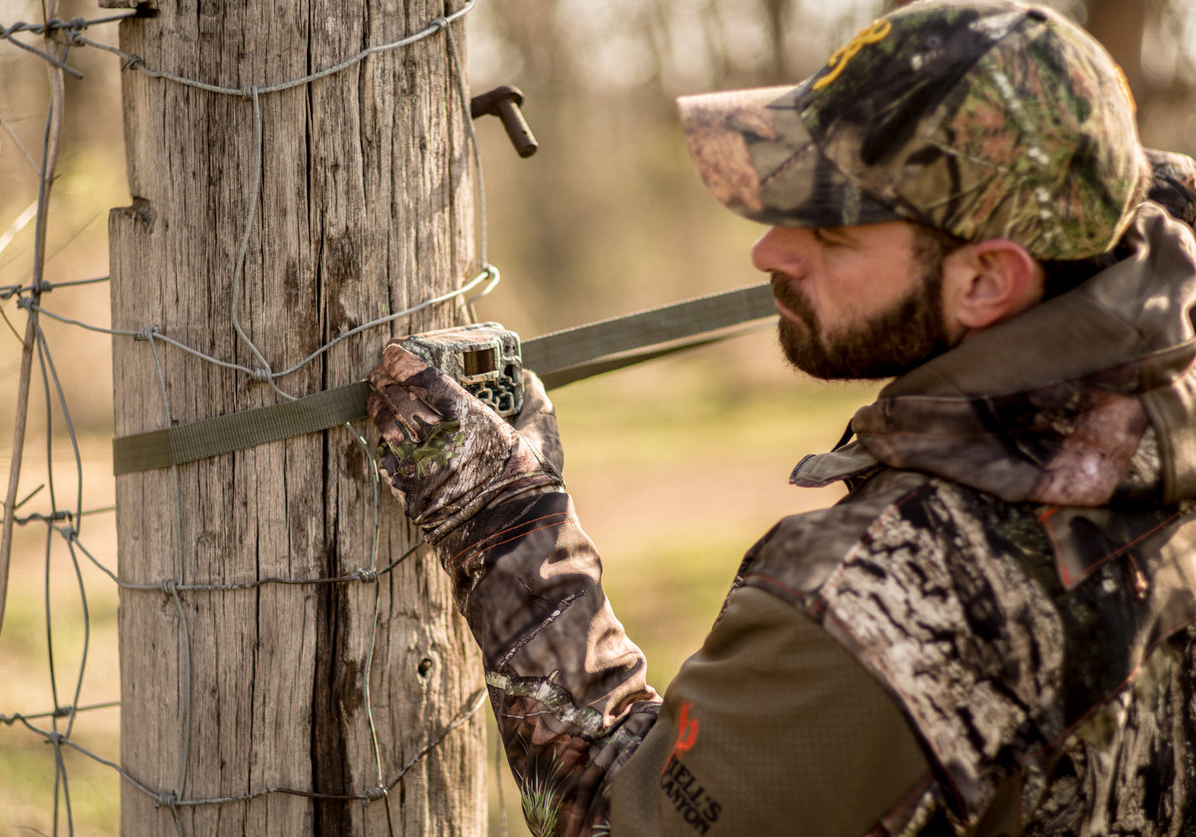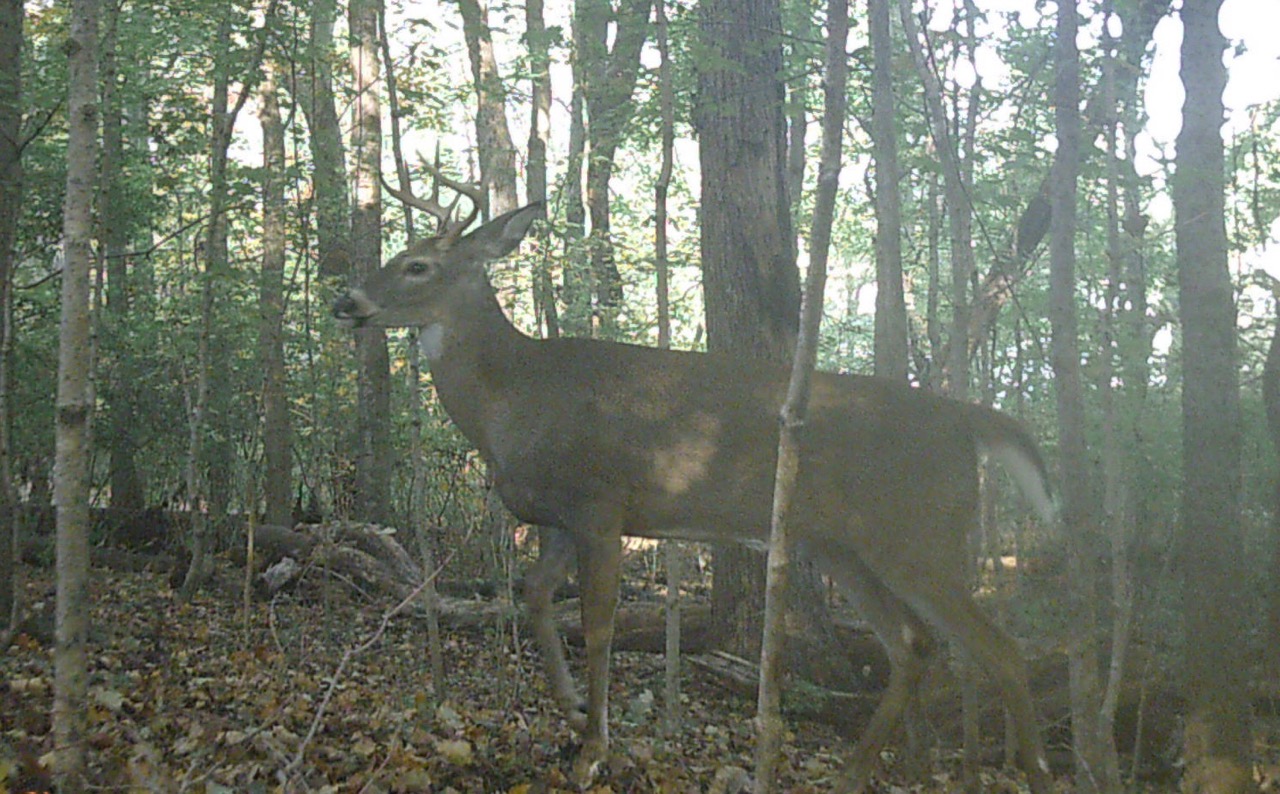Watch and learn
To get the most out of your trail cameras, there’s more to consider than meets the eye
Advertisement
#4 PICK THE SPOT
Don’t put your camera up on just any fence post or tree. Pay attention to the sign and let the critters tell you the best locations to capture incredible images. Follow game trails to places where they fork or converge; the more trails you find that come together, the better the chances of being in the right spot. Signs of animals feeding, such as droppings and broken vegetation, are good indications that critters feel at ease in a particular area.
Advertisement
You’ll find the best buck and bull photos in areas with good cover—the big boys don’t just stand around in the open smiling for the camera. In short, think like an old buck trying to avoid human contact. Look for trails between feeding and resting locations, and avoid walking into known bedding areas. That will only bump game from their comfort zones, often sending them to the next block of heavy cover. A critter must be on the move to trigger your camera, so set up where they tend to travel.
#5 MOUNT IT RIGHT
Mounting a camera correctly is critical to success. A laser light can help immensely to determine exactly where your camera lens is pointed.
Unless your camera has a wide-angle lens, it will need plenty of room to catch movement if it’s set up parallel to a game trail. So instead, angle the camera to look up or down the trail, giving it more time to trigger and collect an image or two. The lens should be at the same height as an animal’s shoulder—a camera set too high will cut off parts of your quarry like your grandparents taking pictures on your smartphone. Lens vary for each camera company, so again, make sure to take test photos before setting up your camera in the field.
Advertisement
#6 SET THE TRIGGER
Trigger speed is important to avoid blurry images. Along with pointing your camera down a trail, use fast trigger speeds to stop the action. In your backyard tests, walk and run past your camera at different distances. It will quickly tell you what to expect in the field.
Also test your camera’s capabilities with infrared or night images. I like to use a rangefinder and walk past the camera at various distances, all the way out to what the manufacturer claims is the flash distance.

When setting your camera on a trail, you want fast images and short delays to catch a buck trailing a doe, or a buck after a buck. To avoid ending up with hundreds of photos of a single critter, short triggers and longer delays on the field and feeder settings are ideal. Think about how animals will be travelling through the area, and how often, and set up accordingly.
#7 ALWAYS BE PREPARED
What happens when you find the perfect location for a camera and there’s no tree or fence post? You can use a metal T-post to secure your camera wherever you want. If you have exclusive access to the area, you could even set up a tripod for a test run to see what you capture. Screw-in camera mounts are easy to use, enabling you to quickly level the camera. You can even make one out of hardware hooks by threading the ends with a tap and die.

If you’re setting up in bear country, you can also make bruin-proof boxes from electrical boxes. There are a variety of sizes, and with the knockouts, you can make the lens and trigger opening any size you need to keep the camera safe. Use straps or a lag bolt to attach the box to a tree or fence post, ensuring the bears will get frustrated.
If you plan to deploy your cameras year-round, consider using solar batteries with solar panels or larger 12-volt batteries to ensure your camera never runs out of power. I also suggest you give individual names to your various cameras to help keep track of the photos from different locations for later reference. It’s surprising how quickly the camera sites all start to look the same.
All the little things add up when you’re striving to get the perfect trail camera photos. Pay attention to the details, and if you aren’t getting the shots you want, make the necessary changes—don’t expect the animals to.


